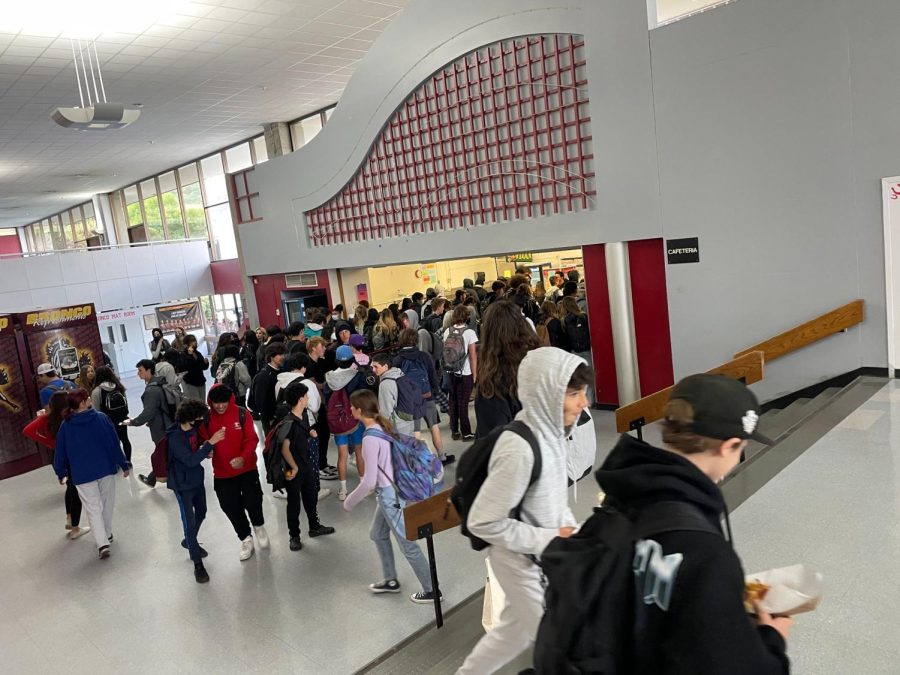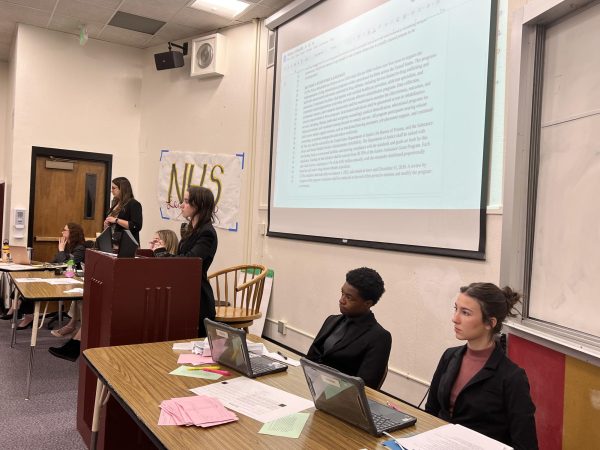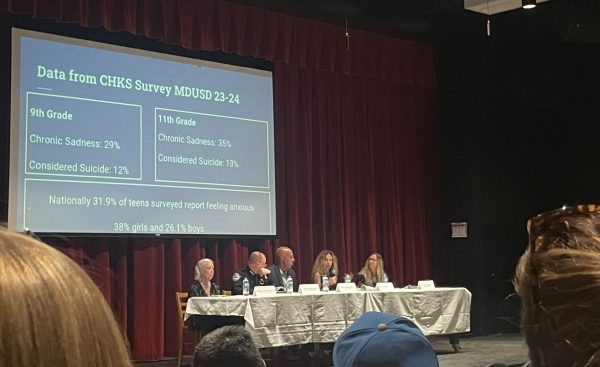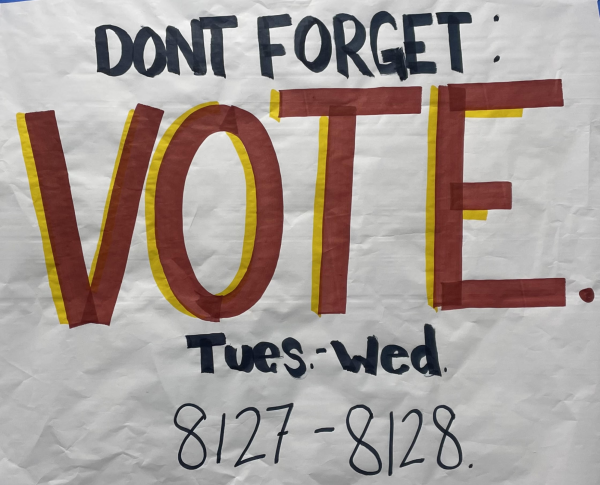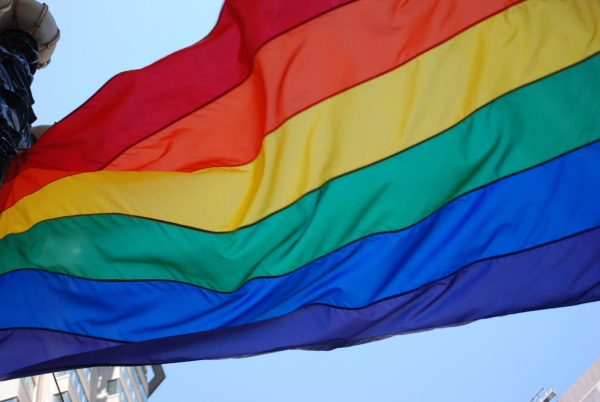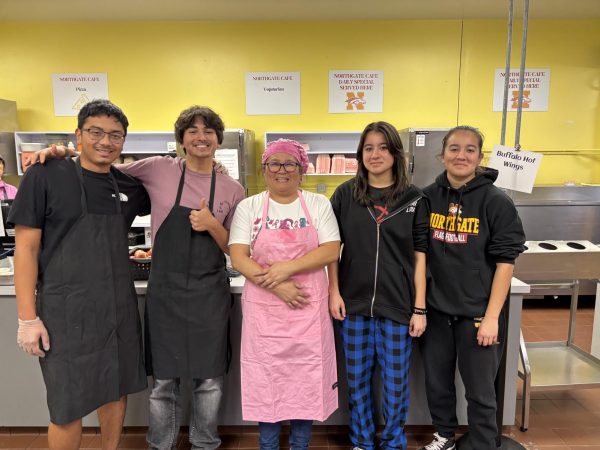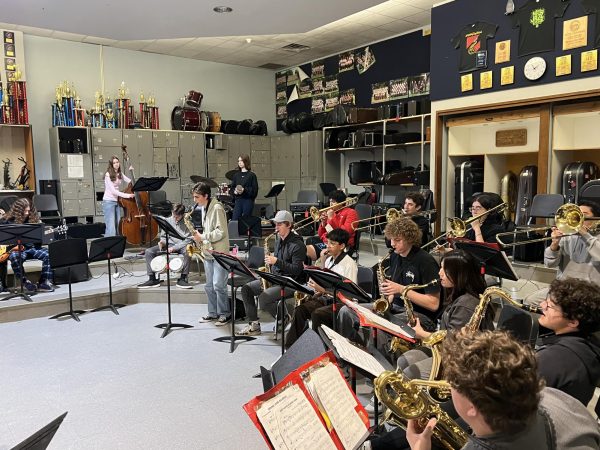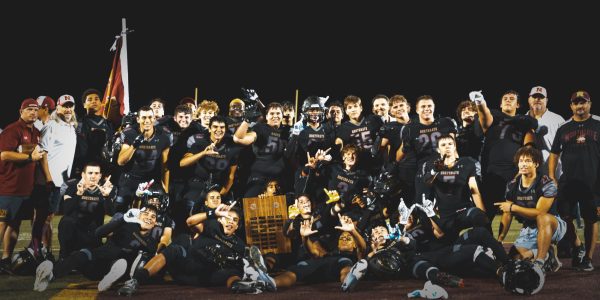Free lunch for all students results in three times as many seeking meals
Free food at brunch and lunch this year means the cafeteria serves as many as 900 meals a day. This is lunchtime on March 28.
So you forgot to bring your lunch and don’t have money to buy any? No problem – it’s free.
California became the first state to provide all students with free breakfasts and lunches. Previously considered to be too expensive to implement, California legislators agreed last summer to permanently provide $650 million annually to support approximately 6 million children in the state’s schools, including Northgate, with free food.
In the past, students qualified for free breakfasts and lunches only if their families met certain conditions primarily based on income requirements. State documents identified that as annual income for a family of four of about $48,000 or less.
Many students have welcomed the free lunches, which began in August with the first day of school, and more than three times more students are eating lunches from school than two years ago, the last time school was open and students were purchasing lunch.
Junior Giulia Padoan said she didn’t really buy food two years ago, the last time the school and cafeteria were open, because she never had money with her. Now she gets some lunch once or twice a week.
“I go when I don’t bring my lunch,” Padoan said, adding that she has tried pasta, salads, burritos and sandwiches. “I love it.”
State legislators put forth this change, saying free lunches decrease the number of children with empty stomachs, thereby reducing school absences, minimizing fatigue, and ultimately improving learning.
In July they approved Senate Bill 129, titled School Meals for All, which provided “an increase in state meal reimbursements by $54 million in the 2021-22 fiscal year and $650 million ongoing Proposition 98 funding beginning in 2022-23, to cover the costs of offering breakfast and lunch for all students,” according to the California Department of Education.
One challenge has been for the cafeteria staff to keep up with the substantial demand for free meals. The dramatic increase in the number of meals needing to be prepared each day has placed a significant burden on the school staff.
Principal Kelly Cooper shared her thoughts on the new free lunch program including many important facts about the lunch adjustment. “The cafeteria had been making around 250 paid meals a day, then lunches became free and we had to increase to making 900 meals a day,” Cooper said.
The cafeteria manager – new to Northgate this year – had to make many adjustments in order to make the new free meal program work. “She had to monitor student lunches for the first couple weeks of school to figure out how many she had to prepare,” Cooper added.
Cafeteria manager Shelley Carmichael carries the responsibility of feeding 900 students a day. Carmichael provided insight on how food is prepared and supplied, diving into the process she has to go through to predict the amount of food she has to prepare in a day.
“We plan what we need, and then we order the food,” Carmichael explained one morning in late March, about an hour before the start of lunchtime. “Each day we plan for a certain amount.” This is a very daunting task. It is not easy. Her job is to make sure that the cafeteria has enough food for students, without leading to waste.
Carmichael described the planning process. “Daily, we plan to prepare around 400 breakfasts, and about 500 to 550 lunches depending on the day,” she said.
With the number of meals made in a day, does the cafeteria think about putting quality above quantity? Carmichael shared her thoughts about this: “We want students to be able to eat the school meals, if it’s not edible, students are not going to eat it. The cafeteria’s goal is to produce a lot of quantity with nice quality.”
Being the manager of a cafeteria that serves 900 meals a day is not an easy job, for the previous meals that cost a few dollars were a lot easier for the cafeteria. The paid meals were able to provide more structure and consistency for the school’s kitchen staff. Even though free lunches are not the easiest job for schools, they are changing the lives of students who do not have enough money to pay for food.
Before the 2021-22 school year students paid about $3 for a meal, depending on their purchase. Some students who paid for meals in the past shared their thoughts recently on the free meals and how they have affected them for the better or the worse.
Several students shared their thoughts on the free meals at school.
“I have been eating school lunches for free since middle school since I have always qualified to receive free lunch due to my financial situation,” senior Kaiala Siale said. “Now that I am a senior, school lunch is free for everyone and it has been an interesting experience. In my opinion, now that lunch is completely free, the quality has gone down and portions have decreased-nevertheless, I am still thankful to receive a meal from the school for free.”
Some students say the lines are longer than previously, two years ago, but that they go faster because there is no delay for students to pay.
“More students seem to be taking advantage of the school lunch now that it is free,” said senior Claire Chang. She observed the effects the lunches had on her friends: “It has helped so many that do not have the money to pay for a full meal receive a full stomach of food.”
Senior Luke Joseph said the free lunches are a good idea, as he recalled all the money he spent on food his freshman and sophomore years.
Although there are many things people typically say that school can improve upon, students agree on this: there has been plenty of food this year. Growing students need a complete meal, and this year Northgate has served more than 130,000 meals. And there are still about seven weeks to go.

